- Mesembryanthemum: The Ultimate Guide to Growing from Seed and Care
- Introduction
- Choosing the Right Seeds
- Germinating Mesembryanthemum Seeds
- Transplanting and Care
- Maintenance and Tips
- Conclusion
- Why Grow Mesembryanthemum from Seed
- Choosing the Right Mesembryanthemum Species for Your Garden
- Determining Your Climate Zone
- Consider Growth Habit
- Color and Flower Shape
- Species Recommendations
- Conclusion
- Seed Selection and Germination Tips
- 1. Choose Fresh Seeds:
- 2. Seed Variety:
- 3. Germination Conditions:
- 4. Preparing the Soil:
- 5. Sowing the Seeds:
- 6. Watering:
- 7. Germination Time:
- 8. Transplanting:
- 9. Provide Adequate Light:
- 10. Regular Care:
- Mesembryanthemum: Planting and Growing Tips
- 1. Choose the Right Location
- 2. Prepare the Soil
- 3. Start Seeds Indoors
- 4. Transplant Outdoors
- 5. Mulch and Water Properly
- 6. Fertilize Sparingly
- 7. Deadhead Spent Flowers
- 8. Protect from Extreme Heat
- 9. Watch for Pests and Diseases
- 10. Enjoy the Vibrant Blooms
- Proper Care for Mesembryanthemum
- Light
- Soil
- Watering
- Fertilizer
- Pruning
- Pests and Diseases
- Propagation
- Common Pests and Diseases of Mesembryanthemum
- Pests
- Diseases
- Prevention and Control
- Expert Gardening Advice for Mesembryanthemum Enthusiasts
- Introduction
- Choosing the Right Location
- Sowing Mesembryanthemum Seeds
- Watering and Care
- Dealing with Pests and Diseases
- Pruning and Deadheading
- Overwintering
- Conclusion
- Questions and Answers:
- How do I grow Mesembryanthemum from seeds?
- What are the care requirements for Mesembryanthemum?
- Can I grow Mesembryanthemum in containers?
- How often should I water Mesembryanthemum plants?
- Can I grow Mesembryanthemum indoors?
- When should I sow Mesembryanthemum seeds?
- Videos: 3 GARDENING SECRETS TO GROWING ADENIUM FROM SEEDS || HOW TO GROW ADENIUM?
Mesembryanthemum, also known as Livingstone Daisy or Ice Plant, is a popular flowering plant that belongs to the family Aizoaceae. It is native to South Africa and is widely cultivated for its vibrant and colorful flowers. Mesembryanthemum is a versatile plant that can be grown in containers, rock gardens, or as a ground cover.
Growing Mesembryanthemum from seeds is relatively easy, but it requires some specific care to ensure successful germination and growth. The seeds should be sown in well-draining soil and kept moist until germination occurs. It is important to provide the plant with plenty of sunlight and warmth to encourage healthy growth.
There are many different species of Mesembryanthemum, each with its own unique characteristics and care requirements. Some popular species include Mesembryanthemum crystallinum, which has succulent leaves that resemble ice crystals, and Mesembryanthemum cordifolium, which has heart-shaped leaves and produces bright pink flowers.
If you are considering growing Mesembryanthemum in your garden, it is important to research the specific care requirements of the species you choose. By providing the right conditions and care, you can enjoy the beauty of Mesembryanthemum and add a splash of color to your garden or patio.
Mesembryanthemum: The Ultimate Guide to Growing from Seed and Care
Introduction
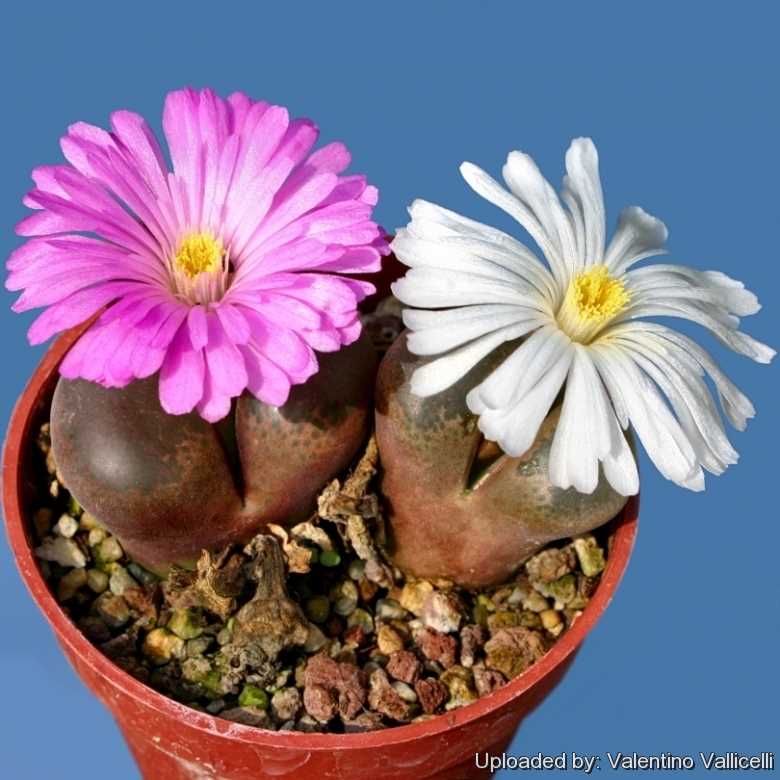
Mesembryanthemum, also known as ice plants or pigface, is a beautiful flowering plant that is native to South Africa. It is known for its vibrant blooms and succulent leaves, making it a popular choice for gardens and containers. In this ultimate guide, we will discuss how to grow Mesembryanthemum from seed and provide tips for care and maintenance.
Choosing the Right Seeds
When selecting Mesembryanthemum seeds, look for a reputable supplier that offers a wide variety of cultivars. Consider factors such as bloom color, plant size, and growth habit to find the perfect seeds for your garden.
It is also important to check the seed quality by looking for freshness and viability. Look for seeds that are plump, uniform in size, and free from any signs of damage or decay. This will ensure successful germination and healthy plant growth.
Germinating Mesembryanthemum Seeds
Mesembryanthemum seeds require warm temperatures to germinate, so it is best to start them indoors. Fill a seed tray or individual pots with a well-draining seed starting mix and water thoroughly.
Place the seeds on the surface of the soil and lightly press them into the soil, ensuring good seed-to-soil contact. Cover the tray or pots with plastic wrap or a humidity dome to create a moist environment for germination.
Keep the seeds at a temperature of around 70-75°F (21-24°C) and provide bright, indirect light. Mist the soil regularly to maintain moisture levels without oversaturating. Your Mesembryanthemum seeds should germinate within 7-14 days.
Transplanting and Care
Once the Mesembryanthemum seedlings have developed their first pair of true leaves, they can be transplanted into larger containers or directly into the garden. Choose a location that receives full sun and has well-draining soil.
Before transplanting, harden off the seedlings by gradually exposing them to outdoor conditions over a period of 1-2 weeks. This will help them adjust to changes in temperature and light.
When transplanting, make sure to space the plants according to their mature size and provide adequate room for airflow. Water the transplants thoroughly and continue to water regularly, keeping the soil evenly moist but not waterlogged.
Maintenance and Tips
- Watering: Water deeply but infrequently, allowing the soil to dry out slightly between waterings. Overwatering can lead to root rot and other issues.
- Fertilization: Mesembryanthemum plants are light feeders, so a balanced, slow-release fertilizer applied once in spring should be sufficient. Avoid excessive fertilization, as it can cause leggy growth and reduced flowering.
- Deadheading: Regularly remove faded blooms to encourage continuous flowering and prevent the plant from diverting energy into seed production.
- Pest and disease control: Mesembryanthemum plants are generally pest and disease resistant. However, watch out for aphids, slugs, and snails. Treat any infestations promptly.
Conclusion
Mesembryanthemum is a stunning plant that can add a burst of color to any garden or container. By following these guidelines for growing from seed and care, you can enjoy the beauty of Mesembryanthemum throughout the season.
Remember to experiment with different varieties, provide proper care, and appreciate the unique features of this extraordinary plant. Happy gardening!
Why Grow Mesembryanthemum from Seed
Mesembryanthemums, commonly known as ice plants, are beautiful flowering plants that can add a splash of vibrant color to any garden or landscape. While it is possible to purchase established Mesembryanthemum plants from a nursery, growing them from seed offers several advantages:
- Cost-effective: Growing Mesembryanthemum from seed is a cost-effective way to expand your garden or landscaping without breaking the bank. Seeds are generally more affordable than established plants, allowing you to grow a larger quantity of flowers for less money.
- Greater variety: When growing Mesembryanthemum from seed, you have access to a wider variety of cultivars and species. Nurseries may only carry a limited selection, but when starting from seed, you can choose from numerous colors, forms, and flower sizes to suit your personal preferences.
- Rewarding experience: Watching a Mesembryanthemum plant grow from a tiny seed to a full-grown flowering specimen can be a rewarding and satisfying experience for any gardener. It allows you to witness the entire lifecycle of the plant and understand the growth process more intimately.
- Control over growing conditions: By starting from seed, you have complete control over the growing conditions of your Mesembryanthemums. You can choose the ideal soil type, moisture levels, and exposure to sunlight, ensuring optimal growth and flowering.
- Propagation potential: Growing Mesembryanthemums from seed not only allows you to expand your garden but also gives you the opportunity to propagate and share your plants with others. Once your seedlings have matured, you can easily collect seeds and create new plants for yourself or give them as gifts to fellow gardeners.
In conclusion, growing Mesembryanthemum from seed is a cost-effective, fulfilling, and flexible way to enhance your garden or landscape. With a wide variety of cultivars to choose from and complete control over the growing conditions, you can enjoy beautiful and vibrant Mesembryanthemum flowers while fostering your horticultural skills.
Choosing the Right Mesembryanthemum Species for Your Garden
Mesembryanthemums, also known as ice plants or living stones, are beautiful succulent plants that are native to South Africa. They are known for their vibrant colors and ability to thrive in arid conditions. If you are considering adding mesembryanthemums to your garden, it is important to choose the right species that will thrive in your climate and fulfill your aesthetic preferences.
Determining Your Climate Zone
Before selecting a mesembryanthemum species for your garden, it is important to determine your climate zone. Mesembryanthemums are generally suitable for USDA hardiness zones 9-11, which have mild winters and warm to hot summers. However, there are some species that can tolerate colder temperatures and are suitable for zones 6-8. Determine your climate zone to ensure that you choose a mesembryanthemum species that can thrive in your specific conditions.
Consider Growth Habit
Mesembryanthemums can have a trailing or upright growth habit. Trailing species are great for hanging baskets or cascading over walls and rockeries, while upright species are ideal for garden borders or container plantings. Consider the space you have available and your desired visual effect when selecting a mesembryanthemum species with an appropriate growth habit.
Color and Flower Shape
Mesembryanthemums are known for their vibrant flowers that come in various colors and shapes. Some species have daisy-like flowers, while others have more unique shapes. Consider the color scheme of your garden and the overall aesthetic you want to achieve. Mesembryanthemums are available in a wide range of colors, including shades of pink, purple, orange, yellow, and white.
Species Recommendations
- Mesembryanthemum crystallinum: Also known as the ice plant, this species has unique leaves covered in tiny, glistening, pearl-like cells. It is suitable for dry, coastal climates.
- Mesembryanthemum cordifolium: This species has heart-shaped leaves and produces clusters of bright pink flowers. It is ideal for containers or hanging baskets.
- Mesembryanthemum cooperi: Known as the pink ice plant, this species has vibrant pink flowers and is suitable for coastal regions with mild winters.
- Mesembryanthemum ‘Red Mountain’: This cultivar has stunning red flowers and is known for its tolerance to heat and drought.
- Mesembryanthemum ‘Magic Carpet’: This cultivar features a mix of vibrant colors and is great for adding a pop of color to rock gardens.
Conclusion
Choosing the right mesembryanthemum species for your garden involves considering your climate zone, growth habit, and preferred colors and flower shapes. By selecting species that thrive in your specific conditions and align with your aesthetic preferences, you can enjoy the beauty of these unique and vibrant succulent plants in your own garden.
Seed Selection and Germination Tips
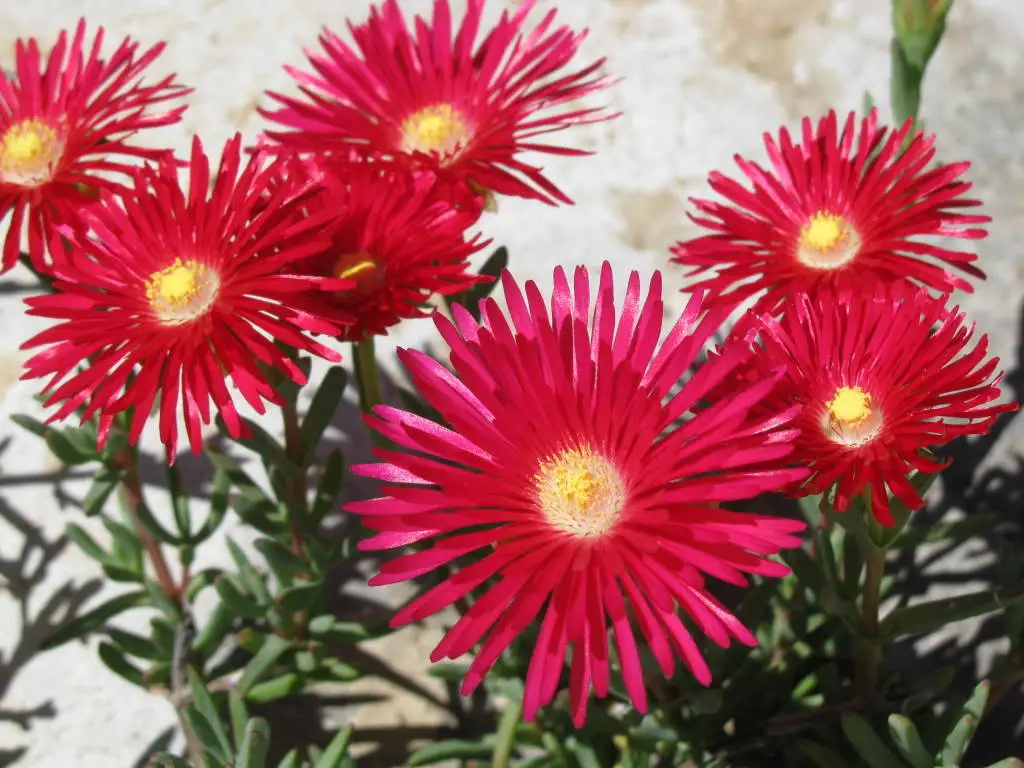
When selecting seeds for your Mesembryanthemum, there are a few factors to consider to ensure successful germination and healthy plant growth. Here are some tips to help you choose and germinate your seeds:
1. Choose Fresh Seeds:
It’s important to use fresh seeds for successful germination. Check the packaging date or purchase seeds from a reputable supplier to ensure their freshness. Older or improperly stored seeds may have a lower germination rate.
2. Seed Variety:
Mesembryanthemum plants come in a variety of species and cultivars. Choose the seed variety that best suits your preferences in terms of colors, flower size, and growth habit. Different species and cultivars may have varying requirements for growth and care.
3. Germination Conditions:
Mesembryanthemum seeds require specific conditions for germination. They thrive in warm temperatures, ideally between 70-80°F (21-27°C). Additionally, they need a well-draining soil mix to prevent waterlogged conditions that can lead to rot.
4. Preparing the Soil:
Before sowing the seeds, prepare the soil by mixing in organic matter or compost to improve its fertility and drainage. This will provide a favorable environment for the seeds to germinate and establish healthy roots.
5. Sowing the Seeds:
For best results, sow the Mesembryanthemum seeds directly on the soil surface, as they require light to germinate. Gently press the seeds into the soil, ensuring good seed-to-soil contact. Avoid burying the seeds too deep.
6. Watering:
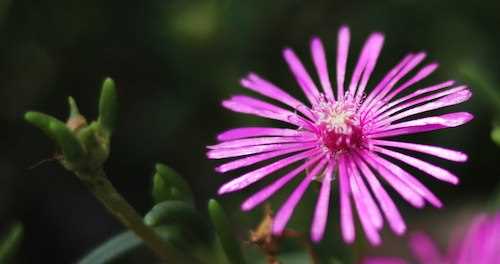
Water the soil lightly immediately after sowing to settle the seeds. Keep the soil slightly moist during the germination period, but avoid overwatering, as it can lead to fungal diseases or rot.
7. Germination Time:
Mesembryanthemum seeds usually germinate within 7-14 days, depending on the species and cultivar. Keep the soil consistently warm and moist during this period to encourage germination.
8. Transplanting:
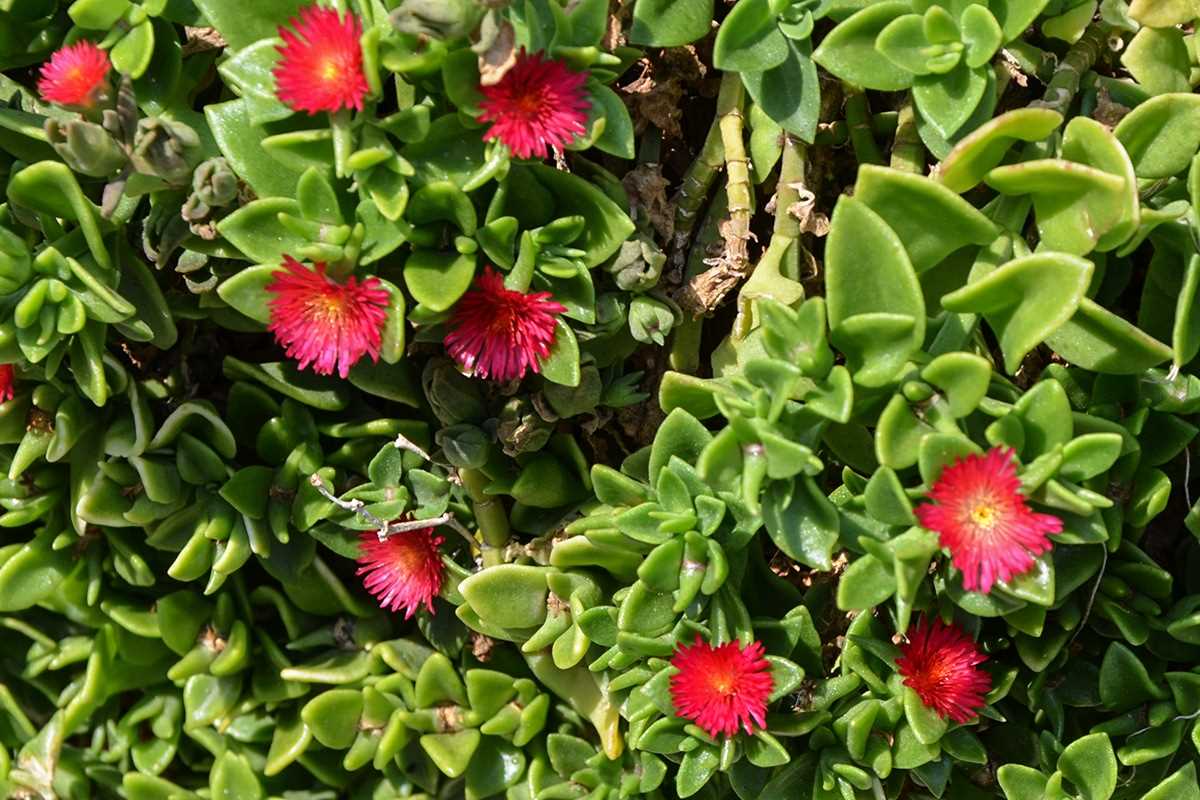
Once the seedlings have developed true leaves and are large enough to handle, usually after 2-3 weeks, you can transplant them into individual pots or your desired garden location. Handle the seedlings carefully to avoid damaging their delicate roots.
9. Provide Adequate Light:
Mesembryanthemum plants need full sun to thrive and produce vibrant flowers. Place them in a location that receives at least 6 hours of direct sunlight per day.
10. Regular Care:
Maintain regular care for your Mesembryanthemum plants, including watering, fertilizing, and occasional pruning. Remove spent flowers to encourage continuous blooming throughout the season.
By following these seed selection and germination tips, you can grow vibrant and beautiful Mesembryanthemum plants in your garden or containers.
Mesembryanthemum: Planting and Growing Tips
1. Choose the Right Location
Mesembryanthemum, also known as ice plant or livingstone daisy, thrives in full sun. Choose a location in your garden that receives at least 6 hours of direct sunlight each day. This will ensure that your mesembryanthemum plants get the energy they need to grow and bloom.
2. Prepare the Soil
Mesembryanthemum prefers well-draining soil with a slightly acidic to neutral pH. Before planting, amend heavier soils with organic matter, such as compost or peat moss, to improve drainage. This will help prevent waterlogged soil, which can lead to root rot.
3. Start Seeds Indoors
If you are growing mesembryanthemum from seed, it is recommended to start them indoors about 6-8 weeks before the last frost date in your area. Sow the seeds in a well-draining seed starting mix and keep them in a warm location with plenty of sunlight or under a grow light.
4. Transplant Outdoors
After the danger of frost has passed and the seedlings have developed their first true leaves, you can transplant them outdoors. Choose a cloudy day or plant them in the evening to reduce stress on the young plants.
5. Mulch and Water Properly
Apply a layer of organic mulch around the base of the plants to help conserve moisture and suppress weeds. Water mesembryanthemum plants deeply but infrequently, allowing the soil to dry out slightly between waterings. Avoid overhead watering, as this can cause the flowers to rot.
6. Fertilize Sparingly
Mesembryanthemum plants are not heavy feeders and do not require frequent fertilization. Use a balanced, slow-release fertilizer or a diluted liquid fertilizer once a month during the growing season. Be careful not to over-fertilize, as this can result in lush foliage but fewer flowers.
7. Deadhead Spent Flowers
To encourage continuous blooming, it is important to deadhead the faded flowers regularly. Pinch off the spent flower heads just above the first set of leaves. This will prevent the plant from putting energy into producing seeds and instead promote the growth of new blooms.
8. Protect from Extreme Heat
Mesembryanthemum plants can tolerate heat, but prolonged exposure to extreme temperatures can cause their flowers to wilt. Provide some afternoon shade or use a shade cloth during hot summer months to protect the plants from intense heat.
9. Watch for Pests and Diseases
Mesembryanthemum plants are generally resistant to pests and diseases. However, they can occasionally be affected by aphids, slugs, or fungal diseases. Monitor your plants regularly and take appropriate measures, such as using insecticidal soap or organic slug repellents, to control any infestations or diseases.
10. Enjoy the Vibrant Blooms
Mesembryanthemum plants are known for their vibrant, daisy-like flowers that come in a range of colors, including pink, purple, orange, and yellow. Enjoy the stunning blooms throughout the summer and early fall, and consider using mesembryanthemum flowers in bouquets or as a colorful groundcover.
Proper Care for Mesembryanthemum
Mesembryanthemum, also known as ice plant or carpet weed, is a beautiful succulent that is easy to grow and care for. To ensure that your Mesembryanthemum thrives, there are a few key care tips to keep in mind.
Light
Mesembryanthemum plants thrive in full sun, so be sure to place them in a location where they will receive at least six hours of direct sunlight each day. If you are growing Mesembryanthemum indoors, place it near a south-facing window to provide ample light.
Soil
Well-draining soil is essential for Mesembryanthemum plants. They prefer sandy or loamy soil that allows excess water to drain away quickly. You can also mix in some perlite or sand to improve drainage.
Watering
Mesembryanthemum plants are drought-tolerant, so it’s important not to overwater them. Allow the soil to dry out between waterings, and be mindful not to let the plant sit in standing water. Water sparingly during the winter months when the plant is dormant.
Fertilizer
Mesembryanthemum plants do not require frequent fertilization. You can provide a balanced, water-soluble fertilizer once a month during the growing season to promote healthy growth.
Pruning
Pruning is not usually necessary for Mesembryanthemum plants. However, if the plant becomes overgrown or leggy, you can trim it back to encourage bushier growth.
Pests and Diseases
Mesembryanthemum plants are generally resistant to pests and diseases. However, overwatering can lead to root rot, so make sure to provide proper drainage. If you notice any signs of pests, such as mealybugs or aphids, you can remove them by wiping the leaves with a damp cloth or using an insecticidal soap.
Propagation
Mesembryanthemum plants are easy to propagate from stem cuttings or seeds. To propagate from cuttings, simply take a stem cutting and plant it in well-draining soil. Keep the soil moist until roots develop. To propagate from seeds, sow them in well-draining soil and keep them moist until they germinate.
By following these care tips, you can enjoy the vibrant and colorful blooms of your Mesembryanthemum plants for years to come.
Common Pests and Diseases of Mesembryanthemum
Mesembryanthemum plants are generally hardy and resistant to pests and diseases. However, there are a few common issues to be aware of that can affect the health and appearance of your plants.
Pests
Aphids: These small, soft-bodied insects feed on the sap of the plants and can cause distortion and discoloration of the leaves. They can be controlled by spraying the plants with a strong jet of water or using insecticidal soap.
Spider Mites: These tiny pests feed on the underside of leaves, causing yellowing and stippling. They can be controlled by regularly washing the leaves with water or using insecticidal soap.
Slugs and Snails: These slimy creatures can chew on the leaves and stems of mesembryanthemum plants, causing damage. You can protect your plants by using barriers, such as copper tape or diatomaceous earth, or by handpicking and disposing of the pests.
Diseases
Root Rot: Mesembryanthemum plants are susceptible to root rot if they are overwatered or if the soil does not drain well. To prevent this disease, make sure to water the plants sparingly and use well-draining soil.
Leaf Spot: This fungal disease causes black or brown spots on the leaves. It can be controlled by removing and disposing of affected leaves and ensuring good air circulation around the plants.
Powdery Mildew: This fungal disease appears as a white, powdery coating on the leaves. It can be treated with fungicides or by improving air circulation around the plants.
Prevention and Control
To prevent pests and diseases from affecting your mesembryanthemum plants, it is important to maintain good garden hygiene. Keep the garden clean and free from debris, remove any dead or infected plant material, and avoid overwatering. Regularly inspect your plants for any signs of pests or diseases and take appropriate action as soon as you notice a problem.
Additionally, providing the plants with proper care and growing conditions, such as adequate sunlight, well-draining soil, and regular watering, can help keep them healthy and more resistant to pests and diseases.
| Pest/Disease | Description | Prevention and Control |
|---|---|---|
| Aphids | Small, soft-bodied insects that feed on sap, causing distortion and discoloration of leaves. | Spray plants with water or use insecticidal soap. |
| Spider Mites | Tiny pests that feed on the underside of leaves, causing yellowing and stippling. | Wash leaves with water or use insecticidal soap. |
| Slugs and Snails | Slime creatures that chew on leaves and stems, causing damage. | Use barriers or handpick pests. |
| Root Rot | Fungal disease caused by overwatering or poor soil drainage. | Water sparingly and use well-draining soil. |
| Leaf Spot | Fungal disease causing black or brown spots on leaves. | Remove affected leaves and improve air circulation. |
| Powdery Mildew | Fungal disease with white, powdery coating on leaves. | Treat with fungicides or improve air circulation. |
Expert Gardening Advice for Mesembryanthemum Enthusiasts
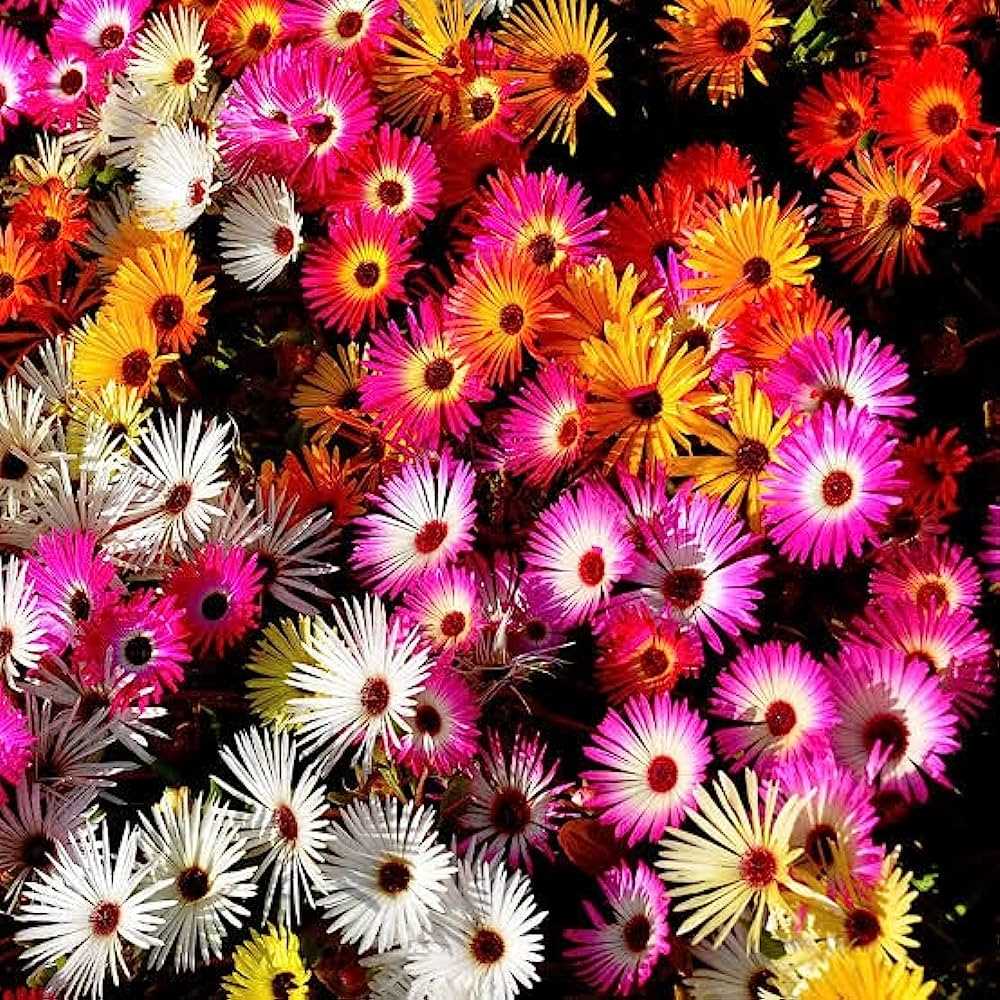
Introduction
Mesembryanthemum, also commonly known as ice plant or pigface, is a beautiful and versatile plant that can add a splash of color to any garden. If you are an enthusiast looking to grow mesembryanthemum from seed or care for the species, this expert gardening advice is for you.
Choosing the Right Location
Mesembryanthemum thrives in full sun, so it’s important to choose a location that receives at least 6-8 hours of direct sunlight per day. Ensure that the soil is well-draining and not too rich in organic matter, as mesembryanthemum prefers sandy or gravelly soil.
Sowing Mesembryanthemum Seeds
When sowing mesembryanthemum seeds, it’s best to do so indoors 8-10 weeks before the last frost date. Fill a seed tray or small pots with well-draining potting mix, and lightly press the seeds onto the surface. Cover the seeds with a thin layer of sand or vermiculite to improve germination.
Watering and Care
Once the seeds have germinated and the seedlings have grown a few sets of leaves, it’s time to transplant them into individual pots or the garden. Water mesembryanthemum sparingly, as overwatering can cause root rot. Allow the soil to dry out between watering, but never let it become bone dry.
In terms of care, mesembryanthemum requires minimal fertilization. Applying a balanced, slow-release fertilizer once at the beginning of the growing season should be sufficient. Avoid fertilizers high in nitrogen, as this can promote leafy growth rather than flower production.
Dealing with Pests and Diseases
Mesembryanthemum is generally resistant to most pests and diseases. However, aphids and snails can sometimes be a problem. To control aphids, you can use a strong stream of water or apply an insecticidal soap. For snails, handpicking or using organic snail bait can be effective.
Pruning and Deadheading
Regular pruning and deadheading can help keep your mesembryanthemum plants tidy and encourage more blooming. Simply remove any wilted or spent flowers to promote new flower production. Additionally, you can trim back the plants after they have finished blooming to maintain a more compact shape.
Overwintering
In areas with mild winters, mesembryanthemum may survive outdoors. However, if you live in a colder climate, it’s best to treat it as an annual or dig up the plants before the first frost and store them in a cool, dry location for the winter.
Conclusion
Mesembryanthemum is a fantastic addition to any garden with its vibrant flowers and easy care requirements. By following this expert gardening advice, you’ll be able to successfully grow and care for mesembryanthemum plants, enjoying their beauty year after year.
Questions and Answers:
How do I grow Mesembryanthemum from seeds?
To grow Mesembryanthemum from seeds, you should start by sowing the seeds in a well-draining soil mix. Lightly press the seeds into the soil and cover them with a thin layer of sand. Keep the soil moist but not soggy, and place the container in a warm and sunny location. The seeds usually germinate within 1-2 weeks. Once the seedlings have grown a few leaves, you can transplant them into individual pots or directly into the garden.
What are the care requirements for Mesembryanthemum?
Mesembryanthemum plants require full sun and well-draining soil. They are drought-tolerant, so be careful not to overwater them. Water the plants deeply when the soil is dry, but allow the soil to dry out between waterings. Fertilize the plants with a balanced, water-soluble fertilizer every 4-6 weeks during the growing season. Deadhead spent flowers to encourage continuous blooming. Trim back the plants in late summer or early fall to promote bushier growth.
Can I grow Mesembryanthemum in containers?
Yes, Mesembryanthemum can be grown in containers. Choose a container with drainage holes and fill it with a well-draining soil mix. Place the container in a sunny location, and water the plants deeply when the soil is dry. Avoid overwatering, as the plants are drought-tolerant. You can also fertilize the plants every 4-6 weeks with a balanced, water-soluble fertilizer. Trim back the plants in late summer or early fall to promote bushier growth.
How often should I water Mesembryanthemum plants?
Mesembryanthemum plants should be watered deeply when the soil is dry. However, it is important to allow the soil to dry out between waterings, as these plants are drought-tolerant. Overwatering can lead to root rot and other problems. Check the soil moisture by sticking your finger into the soil up to the second knuckle. If it feels dry at that depth, it’s time to water. In hot weather, you may need to water the plants more frequently.
Can I grow Mesembryanthemum indoors?
Mesembryanthemum can be grown indoors, but they require a sunny location with at least 6-8 hours of direct sunlight per day. Place the plants near a south or west-facing window, or use artificial grow lights to provide the necessary light intensity. Use a well-draining soil mix and water the plants deeply when the soil is dry. Fertilize the plants every 4-6 weeks with a balanced, water-soluble fertilizer. Trim back the plants in late summer or early fall to promote bushier growth.
When should I sow Mesembryanthemum seeds?
Mesembryanthemum seeds should be sown in early spring, after the danger of frost has passed. They require warm temperatures to germinate, so it’s best to wait until the soil has warmed up. Sow the seeds in a well-draining soil mix and lightly cover them with a thin layer of sand. Keep the soil moist but not soggy, and place the container in a warm and sunny location. The seeds usually germinate within 1-2 weeks.







